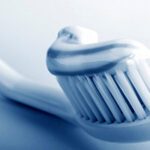Wisdom teeth can be a problem for most people and end up having to be removed due to decay, misplacement, or lack of room for the tooth to grow in without causing your other teeth to become crooked. I just had my wisdom tooth removed a few days ago because it came in when I was pregnant, and has since decayed and broke off to the root, not to mention causing me lots of painful infections and sleepless nights. I had not been to the dentist in years and was nervous about having this procedure done. I asked a lot of questions to the people around me that had undergone different types of orthodontic surgery. After having my questions answered I felt a lot less apprehensive about having my wisdom tooth removed.
You will be evaluated on an individual basis on your initial visit and be given some x-rays so that your dentist can make the best decisions to help you and your orthodontic situation. If there is an infection present, you will be given a prescription for an antibiotic and you will be instructed to return when you are finished with the medicine. Having a tooth removed with an infection present creates the serious risk of the infection traveling to the brain and possibly leading to death. If the infection is bad you will also be given a prescription for an antibiotic mouth rinse to be used 3 days before the removal of the tooth. Using the mouth rinse more than the recommended time can cause discoloration of the tooth enamel.
You will be given a choice of sedation; you will be asked if you want to have an IV drip and remain asleep during the procedure, or if you would rather have a local anesthetic and remain awake and alert during the proceedings like I did. This anesthesia-only method is not only less expensive but it also gives a busy person with no extra time on their hands the opportunity to return to work or home to care for their family without having to wait for the laughing gas to wear off. If you are anxious about the procedure you may be given a Valium to take the morning before returning to have your wisdom tooth removed to help you relax. If you are already in pain you will have a prescription for a pain medication such as Lortab, Vicotin, or Hydrocodone, you could be instructed to take one before your procedure as well and instructed to have someone drive you to your appointment. You will only need to have someone drive you home if you are put to sleep during the surgery.
When you return to have your wisdom tooth removed you will be given a topical anesthetic on a long q-tip; it is swabbed directly onto the spot where your dentist plans to give you the shot of Novocaine. The swab is held on the site for about 1 minute, at the end of which you will notice that your gums, tongue and possibly some of your throat has become numb. When given the anesthetic shot you should feel no pain, be careful not to let much of the Novocaine drip down your throat or it could cause your throat to become irritated and sore. Depending on the number of teeth you are having pulled, you will be given about 3 separate shots. Don’t panic, they don’t jump right in after the shots are given – you are given about 15 minutes to allow the local anesthetic time to take effect. When your dentist and their assistant return to check on you the effectiveness of the shot is tested by poking your gum by the tooth with a tooth scraper; this is done lightly and at this point you should feel nothing. With your consent the procedure will begin.
If you choose to be asleep during your dental surgery you will be given an IV drip, sometimes this is combined with laughing gas (nitrous oxide) and a local anesthetic. You will remember up to the point where the laughing gas takes effect and then you will remember nothing until the time you wake up. The best part of choosing this method is that you won’t feel anything until you wake up and the Novocaine starts to wear off. Make sure to take one of your prescribed pain pills before the pain actually starts to set in, or you will be in severe pain until it fully kicks in. This method of anesthesia is more costly than just receiving a local anesthetic, but it does alleviate the stress and anxiety of going through the surgery awake. Some people are afraid to go to the dentist and this is the only way they can tolerate having any dental work done.
If most of the tooth is missing a slice will have to be made in the gum at the base of the tooth. I didn’t feel anything but pressure at this point and the rest was smooth sailing. You will feel pressure as your tooth is wiggled loose and removed. Sometimes you will be able to taste a metallic taste as the socket begins to bleed after the tooth is removed. The dental assistant will place a gauze pad in your mouth on the socket so that the pressure will help to form a clot. You will be given a stack of gauze pads to take home with you and they will need to be replaced when they become soaked with blood. It is recommended that you keep the gauze in your mouth until the anesthesia wears off so that you will not put too much pressure on the surgery site. Your dentist will call in a prescription for a pain medication after your surgery, and these combined with Motrin taken every four to six hours for the first day will help reduce the possibility of excessive swelling. A cold pack should be held on the surgery site for periods of 20 minutes on and 20 minutes off before any swelling has set in. After the swelling has begun to set in, use a warm compress to reduce the swelling. I use a dampened wash cloth warmed up in the microwave; make sure to dampen all of the wash cloth or it could catch on fire.
To reduce the risk of “dry socket” keep the gauze pad on the wound site for the first two days while you are awake. A blood clot begins to form in the socket to help protect the surgery site and assist in the healing process. It can become dislodged by any amount of pressure from activities like drinking through a straw, smoking, and even blowing your nose, so avoid any of these kinds of activities for at least the first week of healing. If the clot does become dislodged call your dentist right away or you will be for a world of pain. Dry socket can bring even the toughest man to his knees crying like a little girl.
Some side effects are normal and to be expected after having dental or oral surgery, but they are more bothersome than dangerous. Swelling, bruising, stiffness of the jaw, soreness, a temperature of near 100 degrees, unpleasant tastes and odors are all common. Less common side effects that need to be closely monitored are numbness in, or a change of the feelings in or near your surrounding teeth, tongue, lips or chin. Contact your dentist immediately if you have a temperature over 100 degrees for longer than 2 hours that does not break or excessive bleeding that does not stop after one day. It is normal to bleed, sometimes a seemingly large amount for the first day after having your tooth removed, but this should slow down and pretty much stop by day number two. The peak swelling time is about 48 to 72 hours after surgery so do not be surprised if everything seems to be fine and you have no real pain or discomfort until day three. Motrin helps reduce swelling, so keep taking your pain medication combined with Motrin, or you can take three or four Motrin in place of your prescribed pain medicine every four to six hours.
Return to your dentist for the follow up appointment they have made for you so that the progress of your healing can be monitored, and they can also make sure that there is no infection present which will slow down your healing time. It is not advisable that you skip this visit so that any adverse reactions can be caught early enough and treated. If you follow these tips and the advise that your dentist gives you, having a wisdom tooth removed can be a painless experience.



